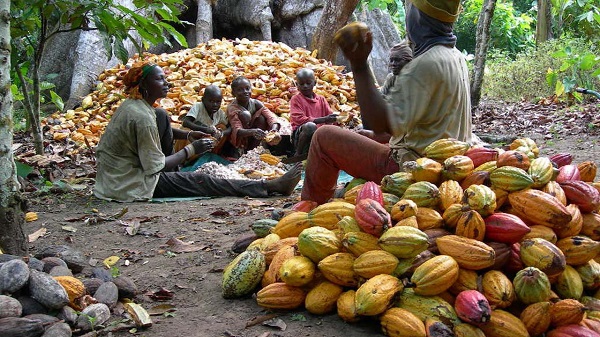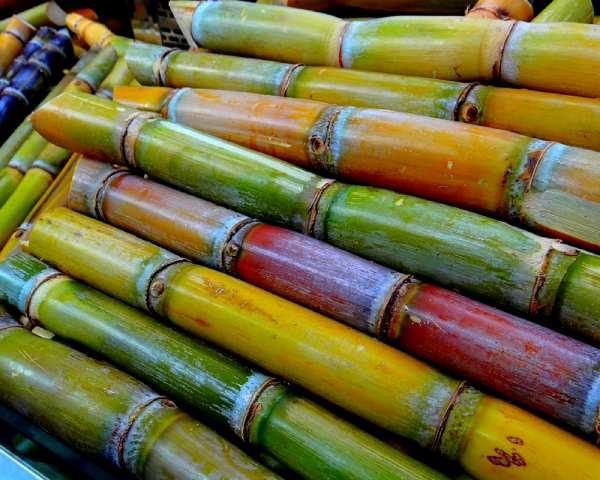SHIPPERS GUIDE
How To Start Cocoa Production Business In Nigeria
By Ayoola Olaitan
The largest producing country by volume is Côte d’Ivoire, which produces around 40% of global supply.
Cocoa is a delicate and sensitive crop, and farmers must protect trees from wind, sun, pests, and disease in order to make huge profits from it.
With proper care, cocoa trees begin to yield pods at peak production levels by the fifth year, and they can continue at this level for 10 years.
It’s a profitable business with the potential to generate income in different ways. More so, it was one of the main foreign exchange products in the Nigerian economy before the oil boom.
Despite the oil boom, the demand for cocoa remains high in the global market. This is because it is an essential ingredient for chocolate and other beverages.
A cocoa tree produces cocoa fruit (cocoa pods) from which cocoa seeds are gotten (cocoa beans). These beans are thereafter processed into cocoa liquor, cocoa butter, cocoa powder, and most popularly, chocolate. In other words, the seed is the goldmine of the cocoa plant.
A significant benefit of cocoa farming is that it requires only one single substantial investment. This is because to start a cocoa plantation, you need to plant the trees just once, and all you do afterwards is to harvest every year, with an average cocoa tree surviving for about 45 years yielding consistently.
Altogether, cocoa production is a lucrative business that can serve you for the rest of your life if well managed. In this article, I will take you through every step you need to take to venture in and succeed in the cocoa business.
Cocoa Production In Nigeria
Cocoa also known as cocoa bean is a dried and fully fermented seed of theobroma cacao from which cocoa solids and cocoa butter are extracted. It is a perennial crop of about 4-8m tall that primarily comes from three tropical regions – West Africa, Southeast Asia and Latin America with Cote d’Ivoire being the single largest producer.
Cocoa is a highly concentrated food providing about 1000 calories per kilogram. It has high nutrient content; about 40% carbohydrates, 40% fat, and 20% protein. Also, it serves as a good source of potassium, magnesium, and iron, and over 7 million tons are consumed in a year.
A cocoa pod contains about 30 – 40 seeds each of which is surrounded by a bitter-sweet white pulp. Then, after it is dried and fermented in the sun, it turns brownish red and then called cocoa bean.
The bean is now used for chocolate, sweets, desserts, medicine, herbs, beverage, drink e.t.c The crushed shells or the pod husks of the cocoa bean are used as a cost-effective, organic fertilizer to help in suppressing weeds, conserving moisture, and minimizing erosion.
Basically, Nigeria is the third largest producer of this product in West Africa. The cultivation is done by many small scale farmers on a farmland of about 2 hectares. It is majorly produced in states like Ondo, Akwa Ibom, Ogun, Cross River, Ekiti, Oyo, Osun, Delta and Edo.
Generally, it is a lucrative venture which requires only a single substantial investment and can serve the owner as long as he lives.
Before you fully begin, there are some basic steps you need to take, which I will highlight in the following paragraphs.
Capital
Cocoa production business requires a huge amount of money to start. This capital will cover land acquisition, seed purchase, pest control, equipment, harvesting, store set-up, e.t.c.
This is why having a well-written business plan is important. With a business plan, you can approach banks for a loan. Also, you can reach out to friends and families, cooperative societies, angel investors or perhaps speak with persons interested in the business and possibly team up as partners.
Most importantly, as soon as you begin, ensure to set aside some funds for labour, pesticide and other expenses until harvest.
Without much ado, let’s go through the step by step plan on the cocoa production process.
Step By Step Plan On Cocoa Production
Choose A Land
Forest lands are the best places for a cocoa plantation. This is because the lands are usually covered by rain forest canopy and cocoa is adapted to growing under such a dense rainforest canopy. Besides, it may be cultivated under shaded conditions, e.g Agroforestry.
They grow on land with regular rainfall, water source, and moderate temperature like 30 – 32°C (max) and 18-21°C(min). Also, the cocoa plant is very sensitive to water deficiency in the soil. Therefore, it should be grown on land with no less than 1000 – 25000mm of rainfall in a year. If they are not grown and nurtured in this kind of environment, they are not likely to develop well.
They require a relatively hot and humid atmosphere as much as 100% in the day and about 70% to 80% at night. Hence, you need a large expanse of land that fulfills this condition.
Prepare The Soil
Cocoa plant requires a deep, relatively damp soil with the right quality and quantity of nutrients. The soil quality will help the trees grow as intended by nature. One of the ways to ensure this is to have good drainage as well as water retention properties.
Also, the layer of soil should be at least 1.5 meters deep with coarse elements. Also, it should be able to absorb nutrients and must be rich in organic matter of at least 3.5%.
Cocoa is tolerant of acid soils as long as the nutrient content is high enough. This kind of soil makes cocoa trees grow an expansive root system which is beneficial during harvest. Also, it will prolong the lifetime of the trees themselves.
Varieties of Cocoa
The Criollos: It is considered the finest and most luxurious of cocoas, a breed that is more susceptible to pests and fungal diseases, and has smaller yields when compared to other cocoa breeds. It is also the most expensive breed.
The Forasteros: This is a very robust and hardy breed of cocoa, a breed that accounts for more than eighty per cent of global cocoa cultivation. It is the most common breed cultivated in Nigeria
The Trinitario: This is a breed derived from crossing Criollos and Forasteros. It combines the robustness of the Forastero with the powerful aromatic cocoa taste of the Criollo.
Plant The Seed
Once the seed has been chosen, the next is to plant. For cocoa, the best time for planting is at the beginning of the rainy season between April to May.
To this effect, there are different processes of planting a cocoa seed. It can be done through seeding, budding, cutting and marcotting;
Seeding
This is the process of growing trees from seeds. After about 15 days of yielding, seeds are taken out of the bean pods and planted into the ground.
Budding
This is an uncommon method of planting cocoa but it is also used. First, cocoa buds are plucked from the grown tree and placed under another tree. Then once the new tree begins to develop, the old one can be cut off and the new tree left to grow.
In this situation, the budding patch should be waxed to prevent moisture loss.
Cutting
This method requires plant cutting with 2-5 leaves and 1-2 buds to grow cocoa. Then, the leave will be sliced, and the cuttings are placed into a prepared pot with polythene.
As soon as the tree roots begin to grow from the pot, it can be transferred to the plantation.
Marcotting
In marcotting, a strip of bark is removed from the branch and the area covered in sawdust and a polythene bag. As soon as the covered area begins to grow, the branched cut will be planted.
Maintain The Plant
Cocoa is prone to disease and as such requires care and the use of chemicals to keep the pest and diseases at bay once it has been planted.
Just like every food crop has peculiar pests and diseases that infect them, cocoa plant is not excepted. Some of the cocoa plant diseases are; the black pod disease (a most serious disease in W/Africa), cherelle wilt, and charcoal rot. The pests are; cocoa mirids, mealybug, cocoa pod borer, and frosty pod rot.
Therefore, once the seed has been planted, routine maintenance must be done for maximum productivity. Weeding, pruning, replacement of dead seedlings, and regeneration of the old cocoa plant should be done.
Harvesting
After about 4-5 years of manual work and labour, cocoa plantation must have been matured, and can be harvested. This harvesting can take place for years with bulk of fruits coming out in October to February and May to August every year.
First, the ripe seed pods are cut from the trees with cutlass or sticks, then split open with a machete to extract the valuable cocoa beans. However, these beans usually have a strong bitter taste, therefore must be fermented.
Fermentation takes about 4- 5 days to develop the sweet flavour. Thereafter, cocoa beans are dried, cleaned and packaged for sales.
Uses Of Cocoa
After harvesting, cocoa seeds are packaged, then exported. The importers then roast the seeds and turn it into other products fit for use.
Some of these products are:
Cocoa Butter: A creamy-colored edible vegetable fat with cocoa flavour and aroma extracted from the beans. It makes up more than 50 percent of the weight of cocoa beans and it’s used for chocolate, ointments, moisturizing creams and soaps, toiletries, and pharmaceutical products.
Cocoa Liquor: This is used with other ingredients to produce chocolate. The chocolate can be used as a product on its own or combined with other ingredients to form confectionery products.
Cocoa Powder: Cocoa powder is used as an ingredient for foodstuff such as chocolate flavoured drinks, chocolate flavoured desserts, etc.
In addition, husks of the cocoa pods and the pulp, or sweatings, surrounding the beans are used for the following;
For feeding animals
For producing soft drinks and alcohol.
Fertilizer for cocoa, vegetable and food crops. e.t.c
Marketing
As long as you can produce cocoa beans, selling is never a challenge. This is because there are several intermediaries who can manage your sales while you concentrate on production. They can be cooperative or licensed buying cocoa agents who deal in selling cocoa to exporting firms.
These intermediaries buy the sacks of unprocessed beans and sell them to exporters who then process it. They crush the bean to remove shells, roast, ground and then turn it into finished products.
So, all you need is to reach out to these intermediaries and they will sell your product for you.
Conclusion
Cocoa production business requires tenacity and years of labour before you can begin to enjoy the benefits. Fortunately, once you labour and endure the waiting period, you are sure of reaping the harvest as long as possible. This is because a plantation can produce more than ten bags and this can be twice in a year.
Besides, it’s a product with global demand. As long as you can commit yourself to it, your profit is sure.









